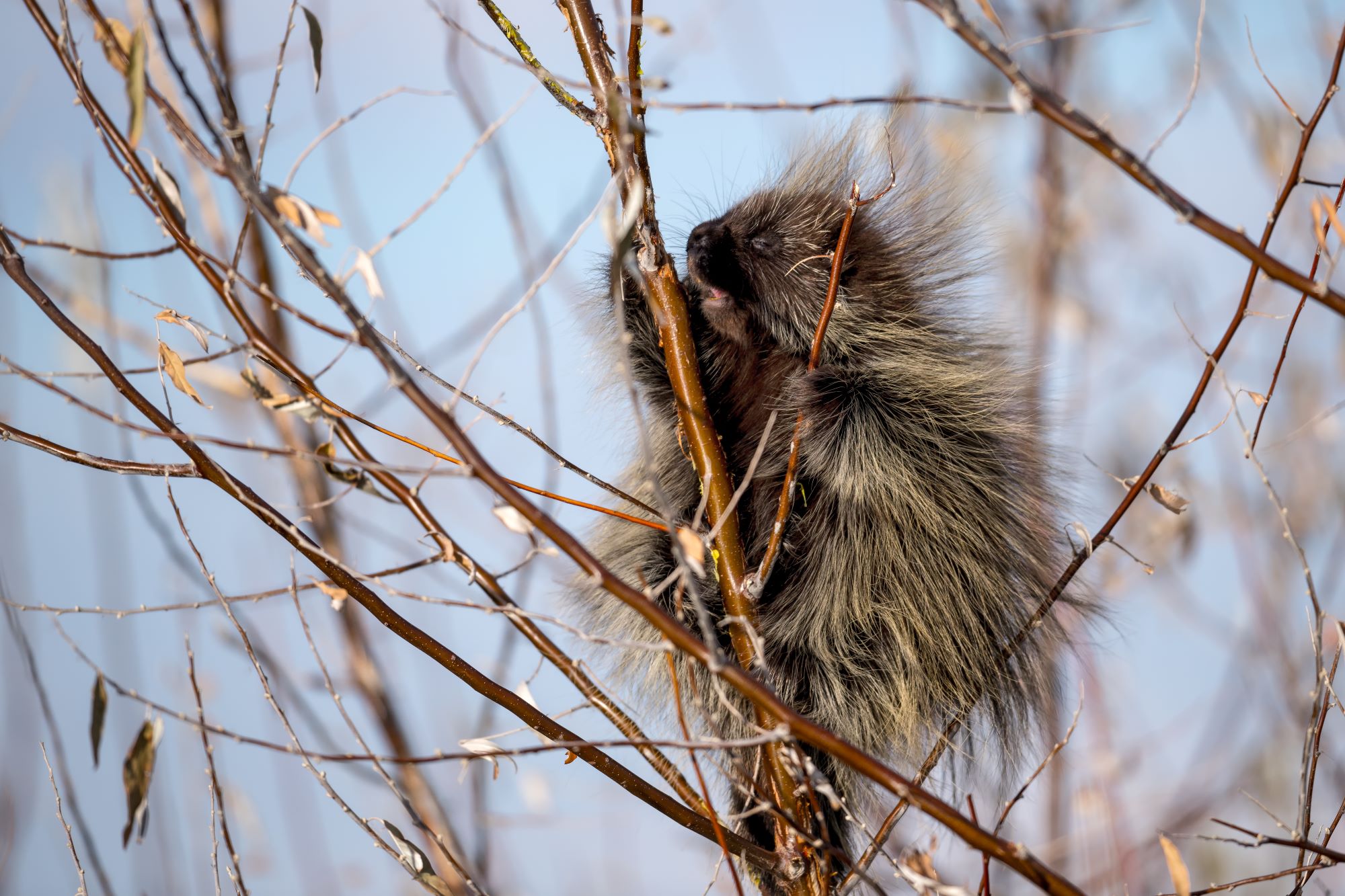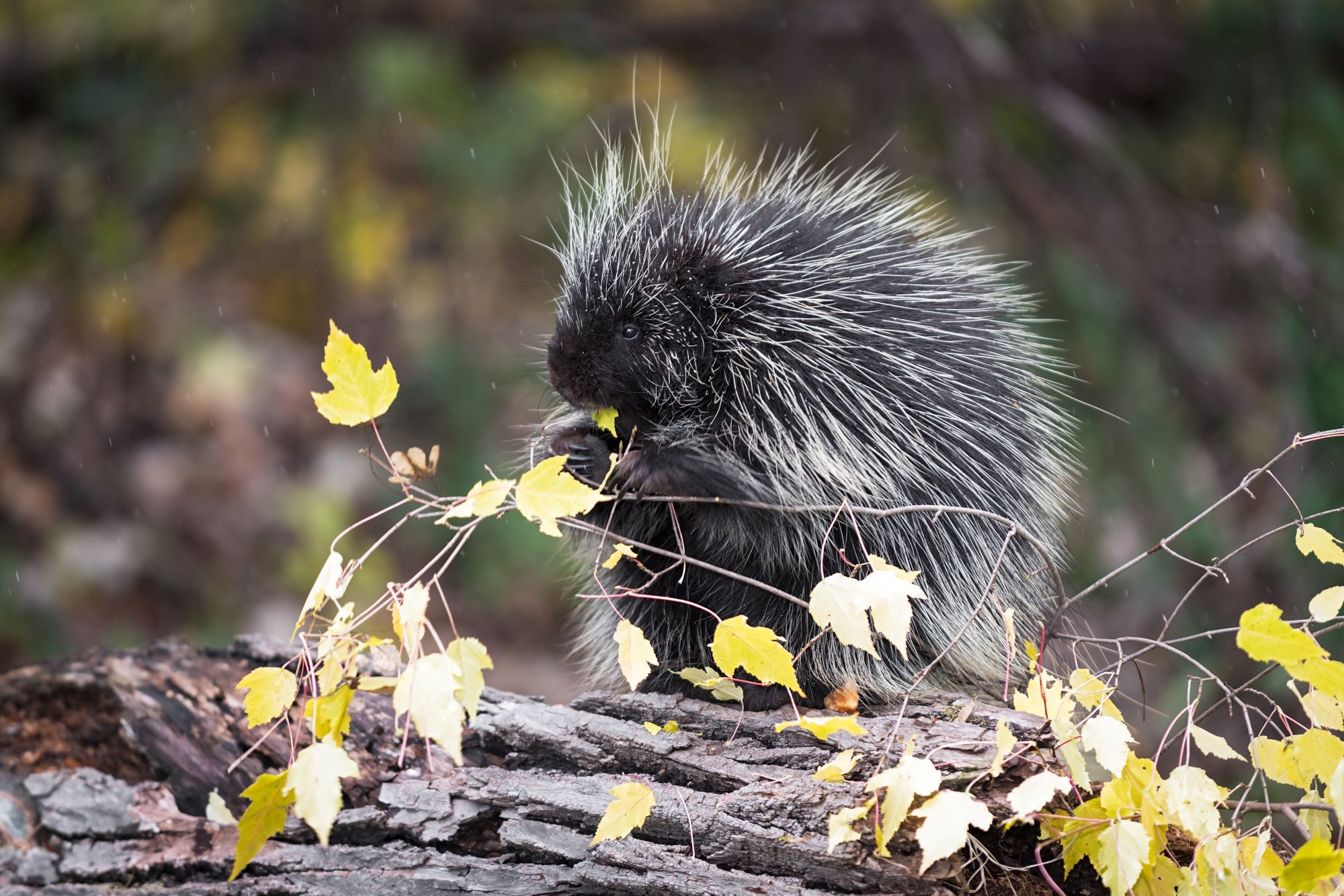
Wildlife in the Salt Lake City Area
The North American porcupine (Erethizon dorsatum) in Utah is a distinctive and intriguing species, found across a range of habitats in the state. These slow-moving, nocturnal rodents are most commonly associated with forested areas, but they are also comfortable in lower shrublands and even semi-arid environments. Their adaptability to different habitats in Utah is a testament to their resilience and versatility as a species.
Physically, North American porcupines are most notable for their quills – sharp, barbed hairs that serve as a defense mechanism against predators. These quills, which cover most of their body except for the stomach, face, and underside of the tail, can detach easily when a predator comes into contact with them. Contrary to popular belief, porcupines cannot 'shoot' their quills; contact is required for the quills to become embedded in another animal. Porcupines also have a distinctive appearance with their stocky body, short legs, and small head. Their coloration is generally dark brown or black, helping them blend into the shadowy forest environments.

The diet of the North American porcupine is primarily herbivorous, consisting of leaves, twigs, and green plants. In Utah, they are particularly known for gnawing on the wood of trees, which can sometimes lead to conflicts with human activities, especially in managed forests and orchard areas. During the winter, when other food sources are scarce, they mainly feed on the inner bark of trees, which can damage or even kill the trees.
Porcupines are solitary animals for most of the year, only coming together for mating. Female porcupines give birth to a single offspring, called a porcupette, after a gestation period of about seven months. Porcupettes are born with soft quills, which harden within a few days of birth, providing them with a defense mechanism at an early age.
In Utah, porcupines play a significant role in the ecosystem. As herbivores, they contribute to the cycling of nutrients and also act as a food source for predators like mountain lions, bobcats, and owls. However, they can become a nuisance in urban or agricultural areas due to their habit of chewing on wooden structures and trees.
Wildlife management regarding porcupines in Utah primarily focuses on mitigating human-porcupine conflicts, especially in areas where their tree-chewing habits cause economic or ecological damage. This often involves public education about porcupines and measures to deter them from certain areas, such as using tree guards or fencing.
In summary, the North American porcupine in Utah is an interesting and important member of the state's wildlife community. Their unique adaptations, particularly their quills, make them one of the most distinctive mammals in North America. Their presence in Utah’s diverse habitats reflects the ecological variety of the state and underscores the importance of maintaining these ecosystems for the continued survival of species like the porcupine.